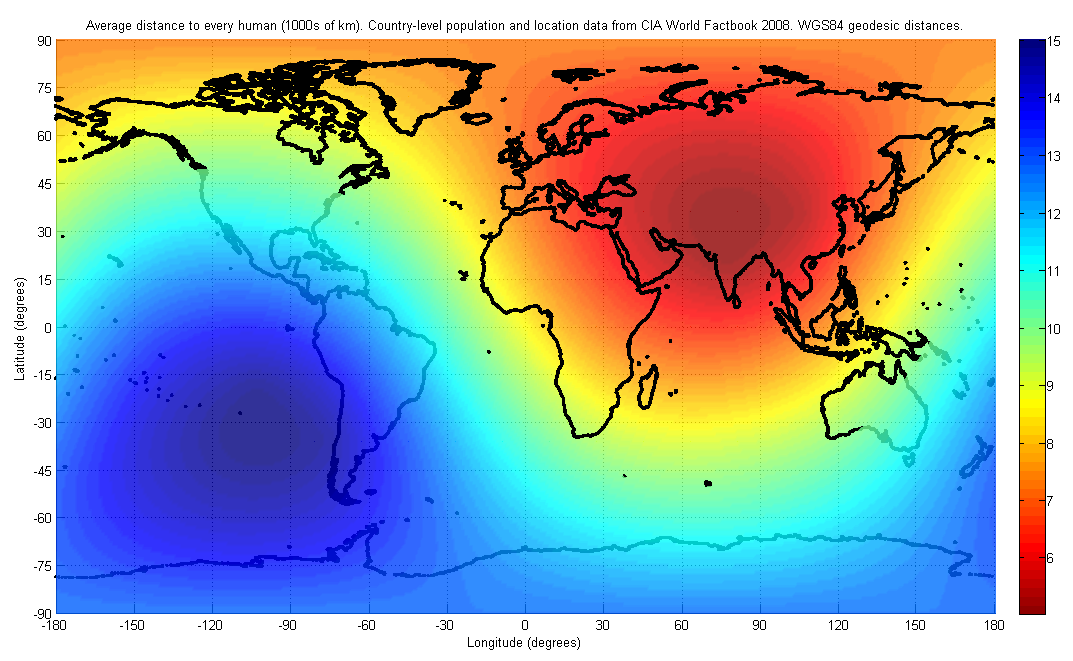|
Theoretical Economic Geography
Theoretical economic geography is a branch of economic geography concerned with understanding the spatial distribution of economic activity. Theoretical techniques in this branch of economics explain a number of Phenomenon, phenomena such as:Lloyd P. E. and Dicken, P. ''Location in Space: A Theoretical Approach to Economic Geography'', Harper &b Row Publishers, New York, 1972 *The clustering of people and businesses into cities. *The location of major center of population, population centers, which is often based on proximity to trade routes. For example, most major cities are located on harbours. *The distribution of people and businesses within cities with higher density in the centres, reducing to lower density on the fringes. *The distribution of populations across land masses, with major cities, interspersed with regional centres which are in turn interspersed with smaller towns. *The business cluster, clustering of similar businesses together. References {{Reflist Econo ... [...More Info...] [...Related Items...] OR: [Wikipedia] [Google] [Baidu] |
Economic Geography
Economic geography is the subfield of human geography which studies economic activity and factors affecting them. It can also be considered a subfield or method in economics. There are four branches of economic geography. There is, primary sector, Secondary sector, Tertiary sector, & Quaternary sector. Economic geography takes a variety of approaches to many different topics, including the location of industries, economies of agglomeration (also known as "linkages"), transportation, international trade, development, real estate, gentrification, ethnic economies, gendered economies, core-periphery theory, the economics of urban form, the relationship between the environment and the economy (tying into a long history of geographers studying culture-environment interaction), and globalization. Theoretical background and influences There are varied methodological approaches. Neoclassical location theorists, following in the tradition of Alfred Weber, tend to focus on industria ... [...More Info...] [...Related Items...] OR: [Wikipedia] [Google] [Baidu] |
Phenomenon
A phenomenon ( : phenomena) is an observable event. The term came into its modern philosophical usage through Immanuel Kant, who contrasted it with the noumenon, which ''cannot'' be directly observed. Kant was heavily influenced by Gottfried Wilhelm Leibniz in this part of his philosophy, in which phenomenon and noumenon serve as interrelated technical terms. Far predating this, the ancient Greek Pyrrhonist philosopher Sextus Empiricus also used ''phenomenon'' and ''noumenon'' as interrelated technical terms. Common usage In popular usage, a ''phenomenon'' often refers to an extraordinary event. The term is most commonly used to refer to occurrences that at first defy explanation or baffle the observer. According to the ''Dictionary of Visual Discourse'':In ordinary language 'phenomenon/phenomena' refer to any occurrence worthy of note and investigation, typically an untoward or unusual event, person or fact that is of special significance or otherwise notable. Philosophy ... [...More Info...] [...Related Items...] OR: [Wikipedia] [Google] [Baidu] |
Center Of Population
In demographics, the center of population (or population center) of a region is a geographical point that describes a centerpoint of the region's population. There are several ways of defining such a "center point", leading to different geographical locations; these are often confused. Definitions Three commonly used (but different) center points are: # the ''mean center'', also known as the ''centroid'' or ''center of gravity''; # the '' median center'', which is the intersection of the median longitude and median latitude; # the ''geometric median'', also known as ''Weber point'', ''Fermat–Weber point'', or ''point of minimum aggregate travel''. A further complication is caused by the curved shape of the Earth. Different center points are obtained depending on whether the center is computed in three-dimensional space, or restricted to the curved surface, or computed using a flat map projection. Mean center The mean center, or centroid, is the point on which a rigid, weig ... [...More Info...] [...Related Items...] OR: [Wikipedia] [Google] [Baidu] |
Business Cluster
A business cluster is a geographic concentration of interconnected businesses, suppliers, and associated institutions in a particular field. Clusters are considered to increase the productivity with which companies can compete, nationally and globally. Accounting is a part of the business cluster. In urban studies, the term agglomeration is used.Porter, M. E. 1998, Clusters and the new economics of competition, Harvard Business Review, Nov/Dec98, Vol. 76 Issue 6, p77, Clusters are also important aspects of strategic management. Concept The term business cluster, also known as an industry cluster, competitive cluster, or Porterian cluster, was introduced and popularized by Michael Porter in ''The Competitive Advantage of Nations'' (1990). The importance of economic geography, or more correctly geographical economics, was also brought to attention by Paul Krugman in ''Geography and Trade'' (1991). Cluster development has since become a focus for many government programs. The under ... [...More Info...] [...Related Items...] OR: [Wikipedia] [Google] [Baidu] |
Economic Geography
Economic geography is the subfield of human geography which studies economic activity and factors affecting them. It can also be considered a subfield or method in economics. There are four branches of economic geography. There is, primary sector, Secondary sector, Tertiary sector, & Quaternary sector. Economic geography takes a variety of approaches to many different topics, including the location of industries, economies of agglomeration (also known as "linkages"), transportation, international trade, development, real estate, gentrification, ethnic economies, gendered economies, core-periphery theory, the economics of urban form, the relationship between the environment and the economy (tying into a long history of geographers studying culture-environment interaction), and globalization. Theoretical background and influences There are varied methodological approaches. Neoclassical location theorists, following in the tradition of Alfred Weber, tend to focus on industria ... [...More Info...] [...Related Items...] OR: [Wikipedia] [Google] [Baidu] |


